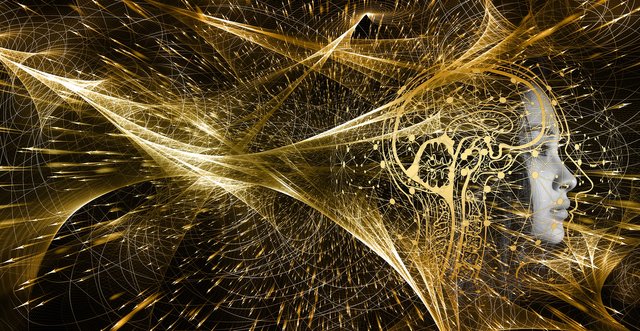Quantum Physicists Created A Quantum Entangled Soup
A new record of quantum entangled atoms just fell in a mixture of rubidium and nitrogen. And it did not even have to be frozen. It actually was hot, yet it was surprisingly stable.

Image by Gerd Altmann from Pixabay
- Be also sure to check out my other posts and follow me @kralizec and subscribe to my Youtube channel at Kralizec Gaming Youtube Channel
Quantum entanglement is weird. But at the same time it quite fragile. It is often considered to be delicate to outside factors. But it seems that entanglement does not need to be so thin-skinned as we thought. In a recent experiment, physicists managed to entangle 15 trillion atoms breaking the record by two orders of magnitude. Plus, they turned them into a really hot cloud of gas. This proves that entanglement can be surprisingly durable.
Spooky Technology
It is no secret that Einstein did not like quantum entanglement. He called it “spooky action at a distance”. But it is essentially the result of hidden properties of particles that were unknown during Einstein's time. But decades of experiments show that entanglement exists and we need to deal with it. And even better – maybe we could use this spooky quantum effect in our technologies.
So far we thought that quantum entanglement works only in very stable conditions. Ideally mostly extremely cold. The majority of experiments and technologies that use quantum entanglement thus work at temperatures close to absolute zero. Almost everything freezes at those temperatures. Even elementary particles which leads to the quantum entanglement not being disturbed by anything.
Hot Entanglement
The problem is in the fact that temperatures close to absolute zero aren't that practical for use in commercial products or applications. But scientists aren't giving up and are trying to get quantum entanglement working at higher temperatures. And recent research succeeded with creating quantum entanglement at room temperature. But now, scientists are aiming even higher.
A team from the Instituto de Ciencias Fotónicas (ICFO) in Spain and their coworkers mixed rubidium and gaseous nitrogen. Then they heated up the mixture to 176.9° C – the temperature when the rubidium evaporates and the atoms of the metal fly around the experimental chamber. Then, these atoms got quantum entangled – this was measured by the scientists by a laser beam.
The measurements showed that the experiment managed to quantum entangle 15 trillion atoms. That is two orders more than previous similar experiments. The incredible part is the fact that the entanglement connected pairs of atoms that weren't close to each other even when there were thousands of atoms between them. But the study authors were most happy about the fact of how stable their hot entanglement was. They estimate that it lasted for about a millisecond after the measurements ended. That is a long time for atoms. During such a small amount of time, each atom will undergo about 50 collisions with other atoms.
The research of this hot entanglement could lead to several interesting applications. For example, it could lead to powerful sensors that could be used in magnetoencephalography but also in autonomous cars or experiments that search for dark matter.
Sources:
- If you like the content I’m producing about science maybe you will like the content I produce about gaming as well! Be sure to check out my other posts!
This post has been rewarded by the Steem Community Curation Project. #communitycuration07
For future reference, posts that are unique to the Steem blockchain are eligible for higher percentage upvotes. Whenever your post is exclusive to this platform, you can use the #steemexclusive tag to make your post easy for Steem's community curators to find.